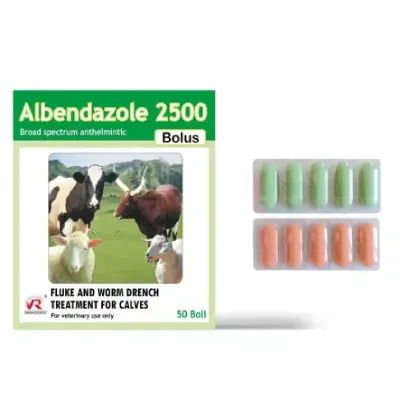- Afrikaans
- Albanian
- Amharic
- Arabic
- Armenian
- Azerbaijani
- Basque
- Belarusian
- Bengali
- Bosnian
- Bulgarian
- Catalan
- Cebuano
- Corsican
- Croatian
- Czech
- Danish
- Dutch
- English
- Esperanto
- Estonian
- Finnish
- French
- Frisian
- Galician
- Georgian
- German
- Greek
- Gujarati
- Haitian Creole
- hausa
- hawaiian
- Hebrew
- Hindi
- Miao
- Hungarian
- Icelandic
- igbo
- Indonesian
- irish
- Italian
- Japanese
- Javanese
- Kannada
- kazakh
- Khmer
- Rwandese
- Korean
- Kurdish
- Kyrgyz
- Lao
- Latin
- Latvian
- Lithuanian
- Luxembourgish
- Macedonian
- Malgashi
- Malay
- Malayalam
- Maltese
- Maori
- Marathi
- Mongolian
- Myanmar
- Nepali
- Norwegian
- Norwegian
- Occitan
- Pashto
- Persian
- Polish
- Portuguese
- Punjabi
- Romanian
- Russian
- Samoan
- Scottish Gaelic
- Serbian
- Sesotho
- Shona
- Sindhi
- Sinhala
- Slovak
- Slovenian
- Somali
- Spanish
- Sundanese
- Swahili
- Swedish
- Tagalog
- Tajik
- Tamil
- Tatar
- Telugu
- Thai
- Turkish
- Turkmen
- Ukrainian
- Urdu
- Uighur
- Uzbek
- Vietnamese
- Welsh
- Bantu
- Yiddish
- Yoruba
- Zulu
8 月 . 30, 2024 07:46 Back to list
Ivermectin Liquid Injectable - Trusted Solution for Parasitic Infections
Understanding Ivermectin Liquid Injectable Uses and Considerations
Ivermectin is a widely recognized antiparasitic medication that has gained attention for its effectiveness in treating various infections caused by parasitic organisms. Originally developed for veterinary use, ivermectin is now also employed in human medicine to combat diseases such as onchocerciasis (river blindness), lymphatic filariasis, and scabies. The liquid injectable form of ivermectin offers unique advantages for certain applications, particularly in veterinary medicine.
Composition and Mechanism of Action
Ivermectin is a macrocyclic lactone that works by binding to glutamate-gated chloride channels in the nerve and muscle cells of parasites. This binding leads to paralysis and eventual death of the parasite. In its injectable form, ivermectin is often formulated with solvents that enhance its solubility and bioavailability, providing a rapid and effective means of administration.
Uses in Veterinary Medicine
The injectable version of ivermectin is especially useful in treating a variety of parasitic infections in large animals, including cattle, horses, and swine. It is utilized to control infestations of internal parasites like roundworms, lungworms, and external parasites such as mites and lice. The potency and rapid action of the injectable form allow for immediate relief of symptoms and a faster recovery for the animals, making it a preferred choice for veterinarians dealing with severe infestations.
Potential Applications in Human Medicine
ivermectin liquid injectable

While ivermectin is primarily known for its oral and topical formulations in human medicine, its injectable form has also been explored. Research has indicated that the injectable route may offer advantages in certain treatment scenarios, such as patients with difficulty swallowing or those requiring immediate therapeutic effects. However, this application is less common and often considered due to the availability of effective oral formulations.
Safety and Side Effects
Like all medications, ivermectin can have side effects. Commonly reported reactions include dizziness, nausea, diarrhea, and skin rashes. In the veterinary context, side effects are relatively rare but can sometimes occur if the dosage is improperly calculated. It is essential for both veterinarians and healthcare providers to adhere to recommended dosages to minimize risks of toxicity.
Regulatory Considerations
The use of ivermectin, particularly in livestock, is subject to regulations dictated by veterinary pharmaceutical agencies. It is crucial for livestock producers to follow withdrawal times to ensure that ivermectin is cleared from the animal's system before the meat or milk enters the food supply. Understanding and adhering to these regulations not only ensures consumer safety but also supports responsible and ethical agricultural practices.
Conclusion
Ivermectin liquid injectable is a vital tool in the fight against parasitic infections in both human and veterinary medicine. Its effectiveness, combined with the ability to deliver rapid treatment, makes it a significant option for addressing severe infestations. However, it is essential to appreciate the guidelines surrounding its use, as well as to monitor for any potential side effects. Ongoing research and development may further expand the applications of ivermectin, paving the way for innovative treatments that can enhance health outcomes across multiple species. As the understanding of this versatile medication grows, it will undoubtedly play a crucial role in public health and agriculture for years to come.
-
The Power of Radix Isatidis Extract for Your Health and Wellness
NewsOct.29,2024
-
Neomycin Sulfate Soluble Powder: A Versatile Solution for Pet Health
NewsOct.29,2024
-
Lincomycin Hydrochloride Soluble Powder – The Essential Solution
NewsOct.29,2024
-
Garamycin Gentamicin Sulfate for Effective Infection Control
NewsOct.29,2024
-
Doxycycline Hyclate Soluble Powder: Your Antibiotic Needs
NewsOct.29,2024
-
Tilmicosin Premix: The Ultimate Solution for Poultry Health
NewsOct.29,2024













